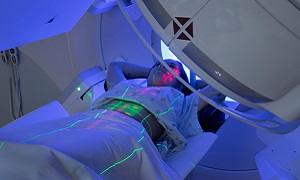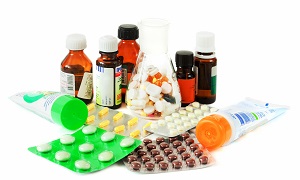Adenocacinoma
Adenocarcinoma is a type of cancer that begins in the gland that lines the insides of one of the organs in the body. This condition can occur in several parts such as your colon, breasts, esophagus, pancreas, lungs, or prostate.
If you are having this condition, there are several treatments that you can consider to slow or stop this disease, such as chemotherapy or surgery. Treatment, as well as survival rates, generally depend on the tumor’s location, stage, size as well as the overall health of an individual.
Symptoms
This condition may occur in several areas of the body, and there is a long list of symptoms.
Lungs : Adenocarcinoma in the lungs can lead to:
- Coughing
- Hoarseness
- Weight loss
- Weakness
- Exhaustion
- Bloody mucus
Breast : Adenocarcinoma in the breast can show up as a lump or unusual growth.
Prostate : In its early stages, prostate cancer shows no symptoms. However, at a later stage, an adenocarcinoma can lead to any of the following:
- Pain when urinating
- Issues with bladder control
- Painful ejaculation
- More frequent urges to urinate at night
- Blood in the semen
Pancreas : Adenocarcinoma in the pancreas can cause:
- Unintended weight loss
- Pain in the back and stomach
- Oily, pale stools
- Itchy skin
Colon : If adenocarcinoma develops in the colon, the following symptoms are likely to occur:
- A sensation that the bowels are full
- Bloody stool
- Rectal bleeding
- Pain in the stomach
- Unexplained weight loss
Brain or skull : If adenocarcinoma develops in the skull, it can lead to the following symptoms:
- Headaches
- Nausea
- Vomiting
- Blurred vision
- Changes in one’s personality
- Unusual sensations in the legs or arms
- Changes in thinking
- Seizures
Causes & risk factors
Adenocarcinomas can develop due to several different reasons. Scientists are still unsure why adenocarcinomas develop in some people but not others.
However, some clear links can be seen between some of the risk factors. The following list will help you know about the risk factors that can lead cancers to develop as well as adenocarcinomas.
Risk factors common to many of these cancers also include a family history of cancer as well as exposure to radiation therapy previously.
Lungs : Smoking tobacco products or being around second-hand smoke are known to be the main risk factors for lung adenocarcinoma.
Some of the other main risk factors include the following:
- Exposure to any harmful toxins in work or home environments
- Having undergone radiation therapy previously, especially in the lungs
Prostate : Several confirmed risk factors for prostate cancers exist, which can also include adenocarcinoma. They generally include the following:
- Age, as the risk of this condition significantly increases once a man reaches the age of 50
- Having a close relative who is suffering from prostate cancer, may double the risk of developing it
- Race and ethnicity, as prostate cancer is known to be more common in men of African American and Caribbean ethnicity
- Geography, as prostate cancer is known to be more common in North America, Australia, northern Europe, as well as the Caribbean
Breasts : The main risk factors for breast adenocarcinoma include the following:
- Sex, as women are more likely to get breast cancer as compared to men
- Age, since the risk is more significant in older adults
- Taking hormone replacement therapy
- Family history as well as genetics
Pancreas : Risk factors for having include adenocarcinoma in the pancreas include:
- Exposure to certain harmful chemicals in metalwork and dry cleaning
- Smoking
- Overweight and obesity
- Age, as the risk increases as age advances
- Gender, as the condition occurs more in men than women
Brain : Some factors which may the risk of adenocarcinoma spreading to the brain include radiation exposure.
A family history of other diseases linked to cancer, such as Li-Fraumeni Syndrome, might increase the risk of brain cancer as well. However, adenocarcinoma is known to commonly spread to the brain from another location.
Colon : Cancers of the colon and rectum, including adenocarcinoma, have several risk factors that may promote their development. These can include the following:
- Being overweight or obesity
- Having sedentary lifestyle
- Regularly consuming too much alcohol
- History of irritable bowel disease
- Having type 2 diabetes
- A diet high in red or processed meats
- Smoking tobacco
Diagnosis
In order to accurately diagnose your condition, your doctor might need to perform a few tests.
Your diagnosis will most likely begin with an examination. A doctor will need to take an individual’s comprehensive medical history.
Next, the doctor is likely going to ask questions about symptoms and any possible risk factors, such as smoking. He/she might also ask whether other family members have or have had adenocarcinoma.
Several tests may assist a doctor in diagnosing the condition. It may also be needed to carry out multiple tests.
Tests may include one or more of the following options:
Biopsy
During this procedure, the healthcare professional is going to remove a small sample of your tissue. Then he/she will send this to a laboratory for testing.
The location of the adenocarcinoma and the amount of tissue that is required is going to shape the biopsy method. A thin or wide needle is going to be used to obtain a sample. Others, such as colonic adenocarcinomas, can require a technique, such as an endoscopy, which can be more invasive.
In an endoscopy, a healthcare professional will insert a tube into the area showing the symptoms. It is flexible and lighted, and also has a camera attached to it. A doctor might also collect a tissue sample during this procedure for further analysis.
A biopsy can help to indicate whether a tissue sample is cancerous and if the cancer originated at the biopsied site or has metastasized from a different part of the body.
Imaging scans
Blood tests
Blood tests can measure changes in blood cells which may suggest cancer. Some adenocarcinomas and other cancers can circulate certain chemicals in the blood, which can be detected during a blood test.
For example, if levels of prostate-specific antigen are changing, it can indicate prostate adenocarcinoma.
Treatment
Treatment for adenocarcinoma is going to vary depending on the location. Treatment generally includes the following methods:







